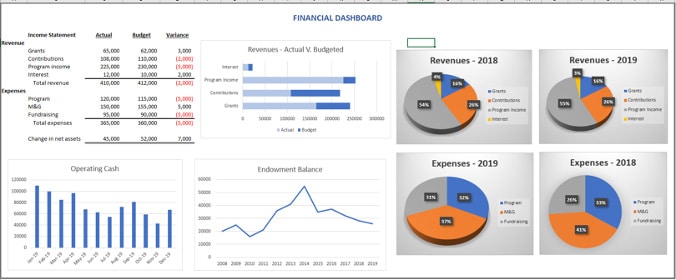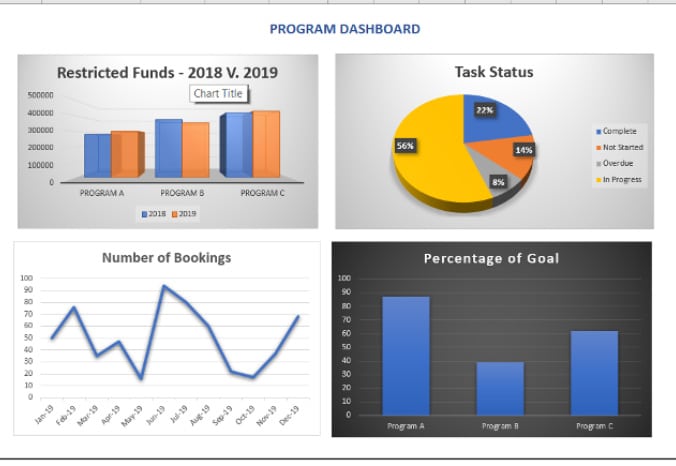by Mike Staton, chief financial officer, Alerding
Data, data, data! Nonprofits and for-profits alike have more data than ever to track, understand and utilize in carrying out their goals. It’s easy to quickly become overwhelmed.
To help get the process started, consider creating dashboards.
Dashboards are short (normally one page) graphical representations of data that can provide the key measurements to make informed decisions. They can show program results, financial results, or any other data that needs to be communicated to a group, and they can be helpful internally for staff uses as well as higher level use by a board of directors or finance committee.

One way to use a financial dashboard like the one shown above is to include it as the cover page in the financial packet when sending monthly financial statements to your finance committee. Dashboards are relatively quick to update once they are created, and they can accomplish the following:
- Easier to understand for those that are not experienced in reading financial statements. Many members of your board of directors and finance committee may not fully understand how to read financial statements. A dashboard provides them the opportunity to see trends and benchmarks that they would otherwise miss.
- Quicker to understand than the full financial statements.
- Provides a frame of reference for reading the financial statements. Once individuals look at the dashboard, they have a basic understanding of how well the organization is performing. This helps put the financial statements into perspective as they are reviewed in detail.

The benefits of financial dashboards described above can also be achieved through program dashboards. The format of these can vary greatly from one organization to the next, since programs and outcomes vary, but the basic process is the same. Management must first identify what information is relevant to them and will help in running the organization. Next, goals must be set so that management has something to compare with the actual results. After that, the dashboard can be created and updated periodically with the most recent program accomplishments.
In today’s environment, finding efficiencies and cutting out non-critical tasks is key to running effective programs. If utilized properly, dashboards can be very beneficial in helping focus efforts and leading to well-informed decisions. To find out how a dashboard can benefit your company or organization, contact Alerding CPA Group at 317-569-4181 or www.alerdingcpagroup.com.


